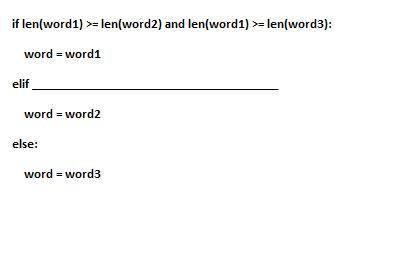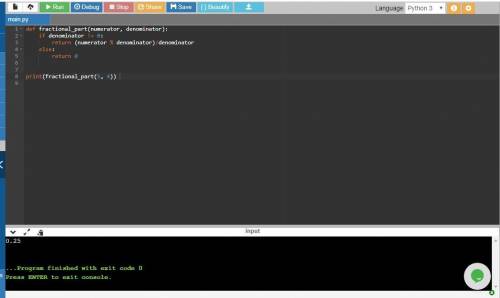 17
17 True, a retractable service pit cover can help other shop employees from falling into the pit while another technician is in the pit servicing a car.
Retractable service pit cover is a special cover made to cover service pit which aid inspection and repair of vehicle in an auto workshop.
Retractable service pit ensure safety of workshop technicians around service pits.Retractable service pits aid proper inspection of the beneath of the vehicleRetractable service pits enable the technician to have a close view of the vehicle in repair.The pit also serves as guide to short-eyed people or people to are not aware of the structure.In essence, the pit prevent against injury or death of workers and occupier.In conclusion, the retractable service pit cover help other shop employees from falling into the pit even if they are aware of the structure.
Learn more about retractable service pit in picture attached
 3
3 Code:
#include <iostream>
using namespace std;
int main()
{
int Car_Year;
cout<<"Please Enter the Car Model."<<endl;
cin>>Car_Year;
if (Car_Year<1967)
{
cout<<"Few safety features."<<endl;
}
else if (Car_Year>1971 && Car_Year<=1991)
{
cout<<"Probably has head rests."<<endl;
}
else if (Car_Year>1991 && Car_Year<=2000)
{
cout<<"Probably has antilock brakes."<<endl;
}
else if (Car_Year>2000)
{
cout<<"Probably has airbags."<<endl;
}
else
{
cout<<"Invalid Selection."<<endl;
}
return 0;
}
Output:
Please Enter the Car Model.
1975
Probably has head rests.
Please Enter the Car Model.
1999
Probably has antilock brakes.
Please Enter the Car Model.
2005
Probably has airbags.
Please Enter the Car Model.
1955
Few safety features.
Explanation:
We were required to implement multiple If else conditions to assign car model year with the corresponding features of the car.
The code is tested with a wide range of inputs and it returned the same results as it was asked in the question.
 5
5 NTQ
Explanation:
The given sequence is
BHE : FLI : JPM
If is clear that, alphabets on first places are B, F, J. Difference between their place vales is 4.
B+4=F,F+4=J ; so alphabet on first place of next term of sequence is J+4=N.
Similarly, alphabets on second places are H, L, P. Difference between their place vales is 4.
H+4=L,L+4=P ; so alphabet on second place of next term of sequence is P+4=T.
Alphabets on third places are E, I, M. Difference between their place vales is 4.
E+4=I,I+4=M ; so alphabet on third place of next term of sequence is M+4=Q.
Therefore, the next term is NTQ.
 12
12 The following code or the program will be used
Explanation:
def readFile(filename):
dict = {}
with open(filename, 'r') as infile:
lines = infile.readlines()
for index in range(0, len(lines) - 1, 2):
if lines[index].strip()=='':continue
count = int(lines[index].strip())
name = lines[index + 1].strip()
if count in dict.keys():
name_list = dict.get(count)
name_list.append(name)
name_list.sort()
else:
dict[count] = [name]
print(count,name)
return dict
def output_keys(dict, filename):
with open(filename,'w+') as outfile:
for key in sorted(dict.keys()):
outfile.write('{}: {}\n'.format(key,';'.join(dict.get(key
print('{}: {}\n'.format(key,';'.join(dict.get(key
def output_titles(dict, filename):
titles = []
for title in dict.values():
titles.extend(title)
with open(filename,'w+') as outfile:
for title in sorted(titles):
outfile.write('{}\n'.format(title))
print(title)
def main():
filename = input('Enter input file name: ')
dict = readFile(filename)
if dict is None:
print('Error: Invalid file name provided: {}'.format(filename))
return
print(dict)
output_filename_1 ='output_keys.txt'
output_filename_2 ='output_titles.txt'
output_keys(dict,output_filename_1)
output_titles(dict,output_filename_2)
main()
 5
5 Energy equation from this week’s notes, your answer from #5, and Plank’s constant (6.63E-34) to find the approximate energy of this photon
Explanation:
1.The amount of energy in those photons is calculated by this equation, E = hf, where E is the energy of the photon in Joules; h is Planck's constant, which is always 6.63 * 10^-34 Joule seconds; and f is the frequency of the light in hertz
2.The first is Planck's equation, which was proposed by Max Planck to describe how energy is transferred in quanta or packets. Planck's equation makes it possible to understand blackbody radiation and the photoelectric effect. The equation is:
E = hν
where
E = energy
h = Planck's constant = 6.626 x 10-34 J·s
ν = frequency
 9
9 x=float(input("Enter a number: "))
sub=(x-int(x))
print(sub)
Explanation:
Got it Right
 1
1 B ). When cleaning a vessel, use regular household detergents and cleaners.
Explanation:
Boat cleaning or vessel cleaning is a tedious job. It takes a lot of hard work to clean a vessel. We have to be careful while maintaining the vessel.
The products that we use to clean and maintain the vessels needs to chosen carefully. Many boat cleaning products have adverse effects on the marine life and aquatic animals. it also tends to pollute the water bodies.
These products may be corrosive in nature, toxic or poisonous.
So we must use the regular household detergents and cleaners to clean our vessels. The regular detergents do not cause any harm to the nature and the water bodies.
We can use phosphate free no detergent soaps which may include citrus based soap or vegetable based soaps.
Therefore, while cleaning or maintaining vessels , use the regular household detergents and cleaners.
Thus option (B) is correct.
Learn more :
link

len(word2) >= len(word1) and len(word2) >= len(word3):
Question with blank is below
def longest_word(word1,word2,word3):
if len(word1) >= len(word2) and len(word1) >= len(word3):
word = word1
elif _________________________________________
word = word2
else:
word = word3
return word
print(longest_word("chair","couch","table"))
print(longest_word("bed","bath","beyond"))
print(longest_word("laptop","notebook","desktop"))
print(longest_word("hi","cat","Cow"))
Explanation
In line 1 of the code word1, word2, and word3 are the parameters used to for the defining the longest_word function. They will be replaced by 3 words to be compared. The code that is filled in the blank is len(word2) >= len(word1) and len(word2) >= len(word3): It is a conditional statement that is true only if the number of characters in the string of word2 is greater than or equal to word1 and word2 is greater than that of word3 .

Here is the fractional_part() function:
def fractional_part(numerator, denominator):
if denominator != 0:
return (numerator % denominator)/denominator
else:
return 0
Explanation:
I will explain the code line by line.
The first statement it the definition of function fractional_part() which takes two parameters i.e. numerator and denominator to return the fractional part of the division.
Next is an if statement which checks if the value of denominator is 0. If this is true then the function returns 0. If this condition evaluates to false which means that the value of denominator is not 0 then return (numerator % denominator)/denominator is executed. Now lets see how this statement works with the help of an example.
Lets say the value of numerator is 5 and denominator is 4. (numerator % denominator)/denominator will first compute the modulus of these two values. 5 % 4 is 1 because when 5 is divided by 4 , then the remainder is 1. Now this result is divided by denominator to get the fractional part. When 1 is divided by 4 the answer is 0.25. So this is how we get the fractional part which is 0.25.
The program with output is attached.


It will provide an instant answer!
